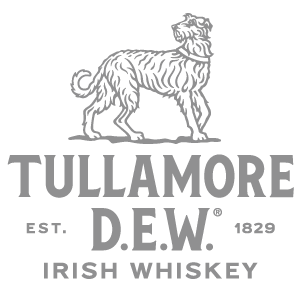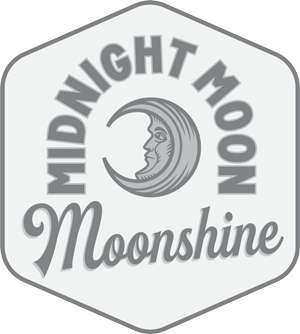The Balvenie distillery was founded by William Grant in 1892. Along with its neighboring sister distillery, Glenfiddich, founded in 1886, it would prove to be the foundation of a Scotch whisky and global beverage empire that today encompasses dozens of brands and operates around the globe
William Grant & Sons is the third largest producer of Scotch whisky in the world and the largest Scotch whisky distiller still under family ownership. It was one of the pioneers of single malt Scotch whisky. Its blended whisky, Grant’s Family Reserve, is the third best-selling blended whisky in the world.
At the heart of William Grant & Sons is the Balvenie distillery. The distillery is a major producer of single malt Scotch whisky and has an unrivaled record as an innovator in the industry.
It was the Balvenie, for example, that pioneered the process of wood finishing where mature whisky is transferred into a second cask that previously held another liquid, like Sherry, Port or rum, in order to create a whisky with greater depth and complexity. Today, the practice is used not only by many other Scotch whisky producers but also by scores of other spirit producers around the world.
Recently I sat down with David Stewart MBE, Balvenie’s Malt Master, to talk about The Balvenie and how it balances its commitment to the traditional craft of whisky making with its record of innovation within the industry.
David Stewart, Malt Master at The Balvenie Distillery
Photo, courtesy The Balvenie
David Stewart has been with William Grant & Sons for more than 50 years. During his tenure, he has developed a broad range of award-winning whiskies and helped the company win the coveted accolade of Distiller of the Year 10 times.
In addition to pioneering the cask finishing process, Stewart was also responsible for the introduction of the Glenfiddich Solera Reserve, the first Scotch whisky to use a solera-like maturation process. Stewart was also the first to finish whisky in ale casks.
JM: The Balvenie Distillery, like William Grant & Sons in general, has embraced the modern while remaining committed to traditional whisky making crafts. It has been quick to adopt automated and process control systems in the distillery, for example, while still retaining the traditional crafts of floor malting, kilning and retaining its own cooperage.
Many distilleries have farmed these activities out to third parties, finding it cheaper and more efficient to do so. Why hasn’t The Balvenie done the same?
DS: I think the main reason for this is The Balvenie is a family company and also very independent with a unique focus on craft. As a result, we like to use our own employees to carry out the all the tasks, like managing and repairing our own casks or maintaining the floor maltings.
Denis McBain, Coppersmith, has been at the Balvenie Distillery for more than 63 years
Photo, courtesy The Balvenie
We think it is extremely important to maintain this tradition and sets the Balvenie Distillery apart from most of the other distilleries in Scotland. It also helps that these are the areas which visitors to the Distillery find the most interesting and are unique to the Balvenie tour.
Maintaining tradition doesn’t mean that we are not innovative, I’m a firm believer that if you know where you came from, you have a clearer idea of where you are going.
JM: Many of the craftsman at The Balvenie collectively represent several hundred years of experience. Robbie Gormley, your Malt Man, has been with the company 42 years. Your Head Cooper, Ian McDonald 48 years and your Coppersmith, Denis McBain, an incredible 63 years. You’ve been with the company 59 years. By comparison, your farmer James Wiseman, seems like a relative novice with just 14 years at The Balvenie. What is the Balvenie doing to ensure the generational transfer of these skills to the next generation?
DS: As a Company we are always looking ahead to train the next generation of craft persons because to become a cooper or a coppersmith, for example, or in my case, a Malt Master takes many years of training, so we need to plan years ahead I have always said that making good whisky takes skill, experience and patience and obviously they are not things you learn overnight.
Looking, for example, at the Master Blender, or Malt Master role, I brought Brian Kinsman into the team to train alongside me in 2001, as I was very likely to move to my current role in 2010. So, he had nine years working with me before taking on role of the Company’s Master Blender in 2010.
More recently I have brought in Kelsey McKechnie to work alongside me to eventually take over the Balvenie Malt Master role. Kelsey has already had over four years working with me and has been responsible for a few of The Balvenie recent releases to date.
Head Cooper, Ian McDonald has been with The Balvenie for 48 years
Photo, courtesy The Balvenie
JM: The distillery retains library samples of its Scotch whisky going back many decades. How would a Balvenie from the 1920s or the 1940s compare to today’s Balvenie?
DS: I have been working for the company for many years now. I have sampled casks of The Balvenie from the 40’s and early 50’s and as one might expect they have that delicate smoky aroma and mouthfeel due to peat drying the barley instead of anthracite nowadays.
Another factor is the oak casks that were used back then (1920s) would have mainly been European casks from Spain. Most of the casks that we now use are American oak barrels from the Bourbon Industry, which have been around for at least the last 70 years in the industry.
We do, however, make every effort to produce a consistent new spirit being produced from our copper stills. Occasional changes have been made in the form of heat used to fire the stills, moving from coal to steam coils or gas heating but still maintaining a consistent new spirit.
JM: The Balvenie has released some of the oldest Scotch whiskies ever bottled. Most recently an expression distilled in 1964. When this whisky was distilled, the single malt category barely existed and there was no commercial market for ultra-aged whiskies beyond what might have been bottled for the family or the company’s directors.
How is it that The Balvenie has whiskies that were allowed to mature for more than half a century? Was that always the intention or was this a case that if the whisky was improving it was allowed to keep maturing until someone made the decision that it was time to bottle it?
Robbie Gormley, Malt Man, has been with The Balvenie for 42 years.
Photo, courtesy The Balvenie
DS: This is once again a factor of being a family-owned company where we were never under any pressure to keep releasing new expressions and, if the whisky at any given age, was not required for use it was then just allowed to mature and improve further in our distillery warehouses. As I said, patience is one of the key factors in making good whisky.
This has been the case for many years now and has allowed us to more recently release a few The Balvenie expressions with a great age. Back 20 years or so ago when these whiskies were maturing further to a great age, we didn’t realize that there would come a time when there was a big demand for aged Single Malts for collectors or wealthy buyers. So, we are very fortunate to be able to supply this demand.
JM: What’s the oldest whisky currently being matured in The Balvenie’s warehouses? Any specific plans for this whisky?
DS: We do have stocks of Balvenie from the early 60’s but cannot divulge our plans for these aged stocks.






































